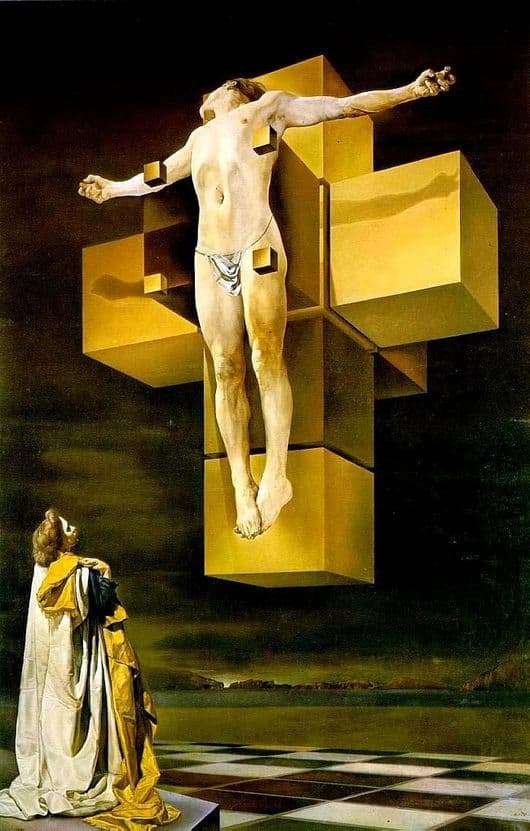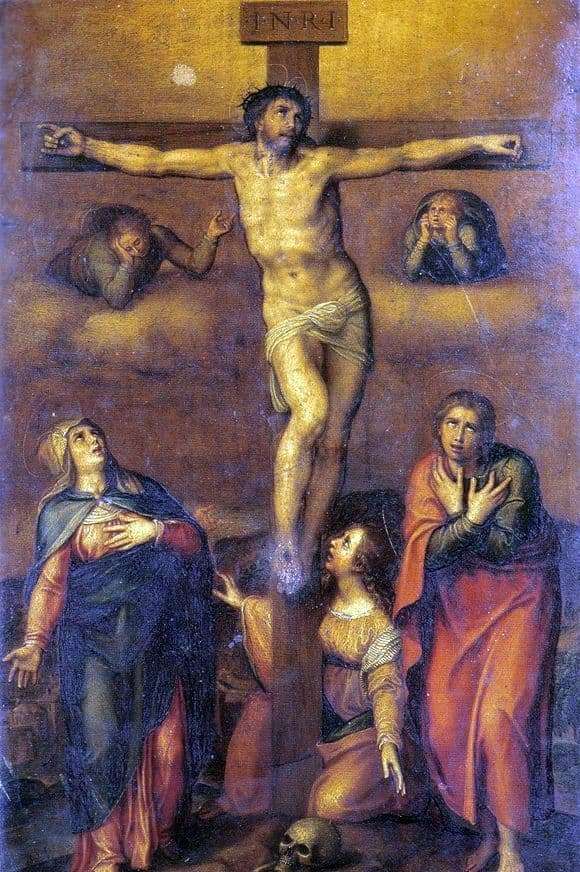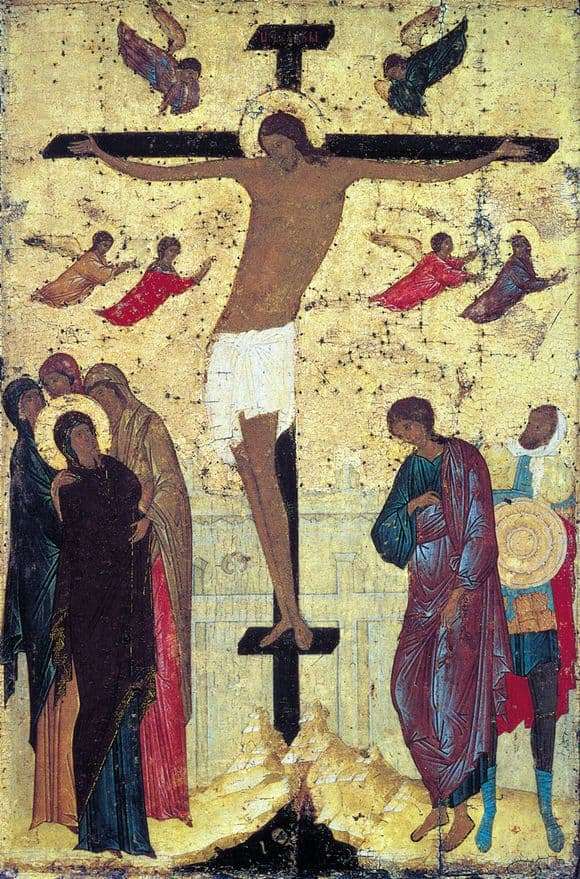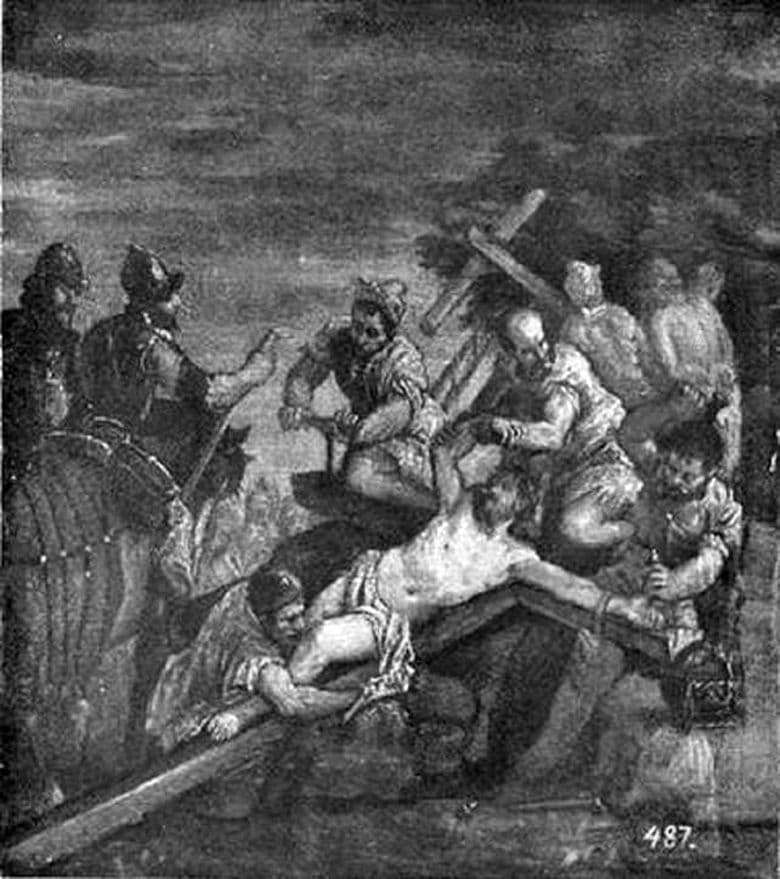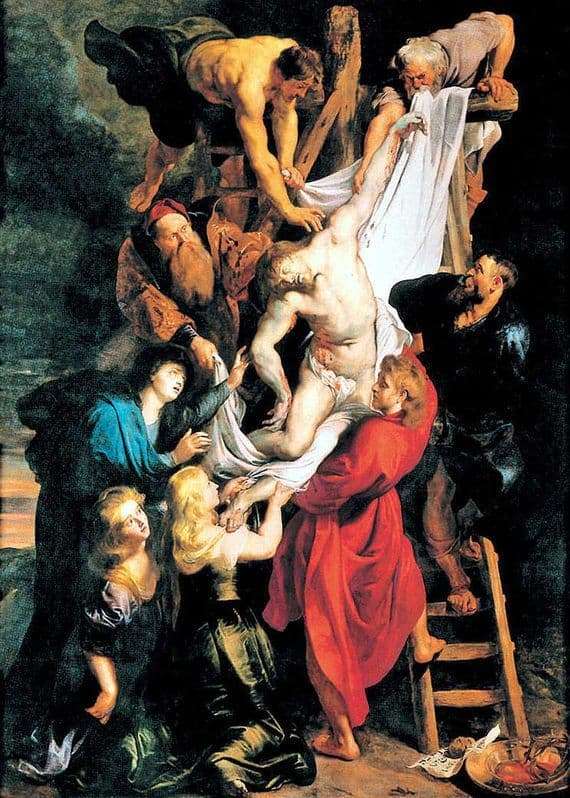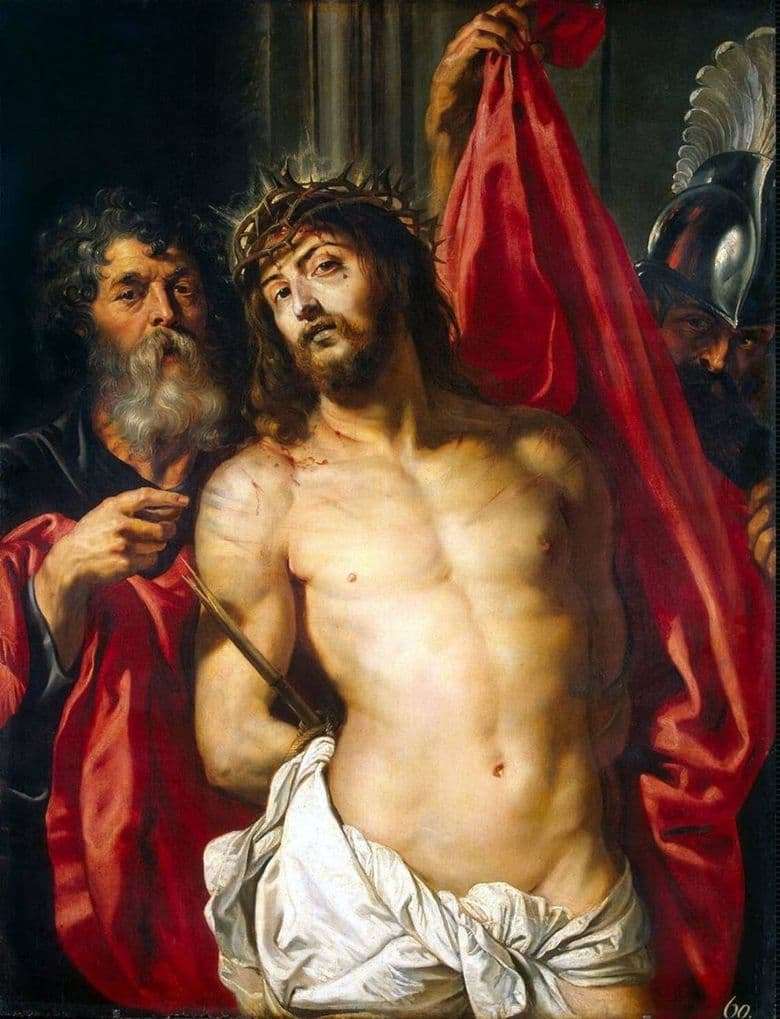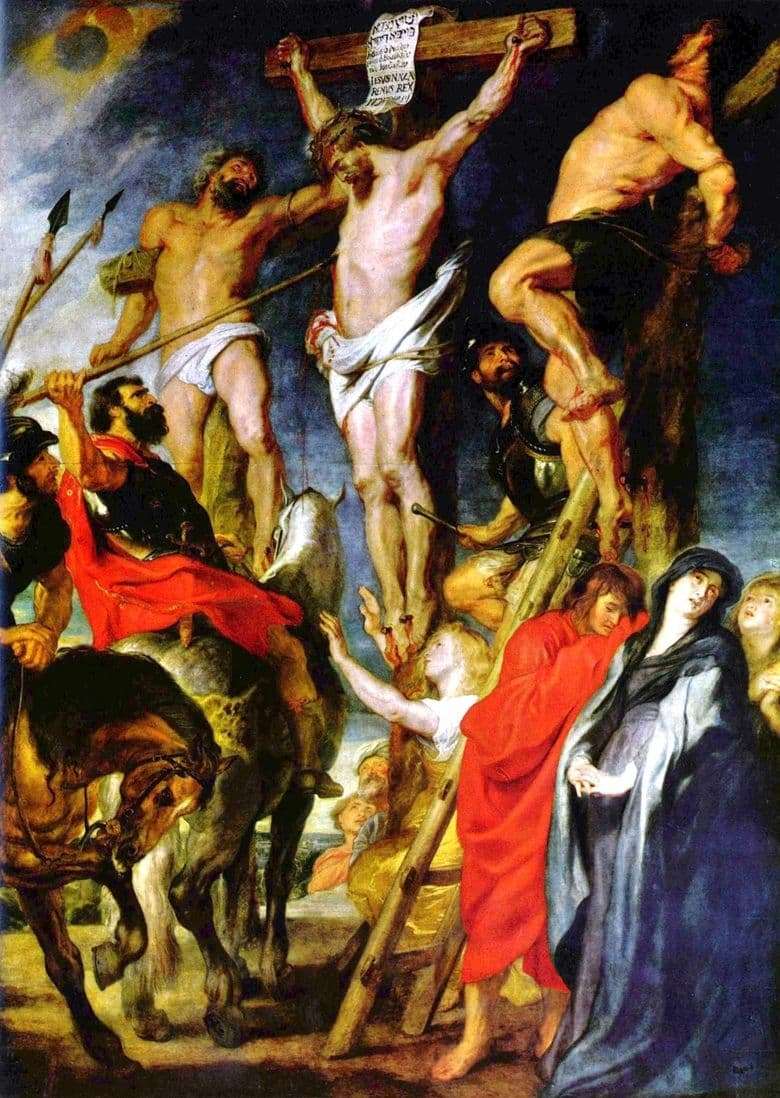
The Crucifixion of Jesus Christ is one of the most popular and beloved scenes of Renaissance and Baroque artists. Peter Paul Rubens resorts to this story in 1606.
Most at work attracts the attention of the body image of Jesus Christ. He was crucified on a high wooden cross. The man’s body is completely limp and loose under the weight. If the hands and feet had not been nailed, he would have fallen long ago. But he continues to hang, and his body is not allowed to shoot. On the head of Jesus – a metal wreath with teeth, on the thighs – a snow-white bandage. A small parchment is placed over the head of the martyr. The man’s head hung on his chest, scarlet blood running down his arms.
In addition to Jesus, they crucified two more men. But they are still alive and suffering from terrible pain. Their bodies are writhing on the crosses, they are trying to escape, escape, remove the wild pain that pierces the whole body. But Roman legionnaires carefully watch them. The canvas depicts two riders on horseback. Another executor of the sentence put the ladder to one of the crosses and tries to punish the obstinate crucified. Total at work depicted twelve people.
In the lower right corner we see several women who came to mourn Jesus. Among them, one can discern the figure of the Mother of God and Mary Magdalen. The Virgin is depicted in a long dark blue dress, a black shawl is thrown over her shoulders and head as a symbol of mourning. The mother is no longer able to look at what happened to her child. The woman turned away, her head tilted to the side, her eyes looking up. It seems that she will faint very quickly or fall into agony. Under the cross is depicted Mary Magdalena. She tries to protect, cover the body of Jesus Christ.
The sky is dark, with large, approaching clouds. The sun, forever illuminating the sky, is now almost invisible – an eclipse has come.
Description of the painting by Peter Rubens “Crucifixion”
